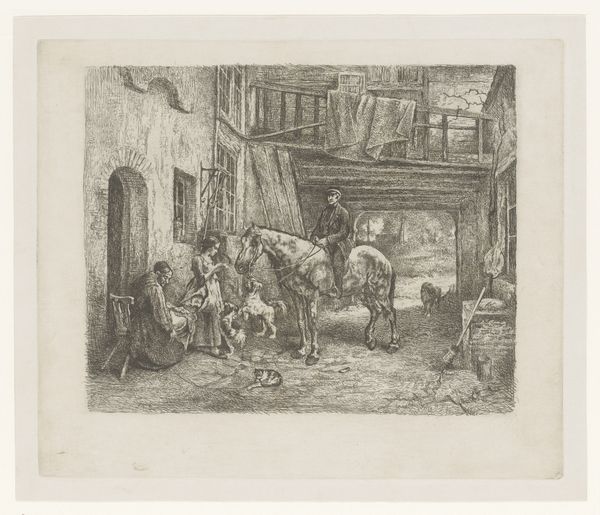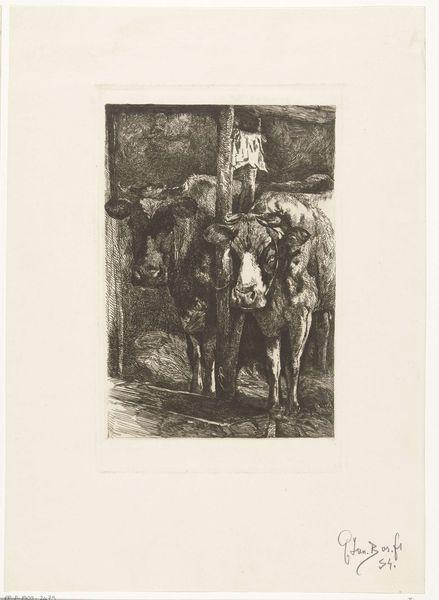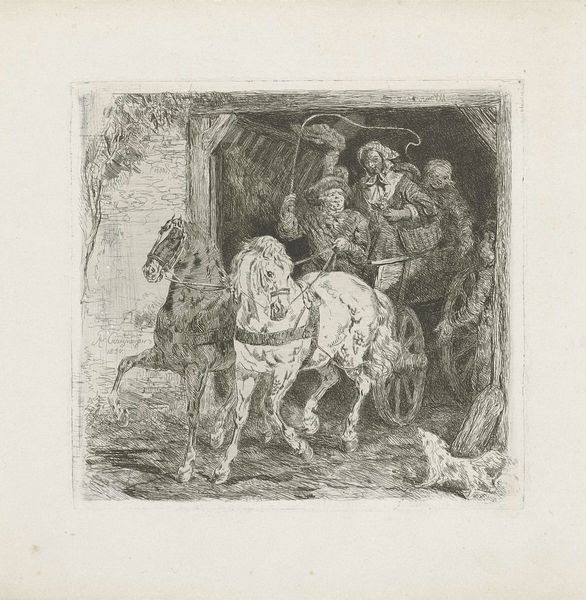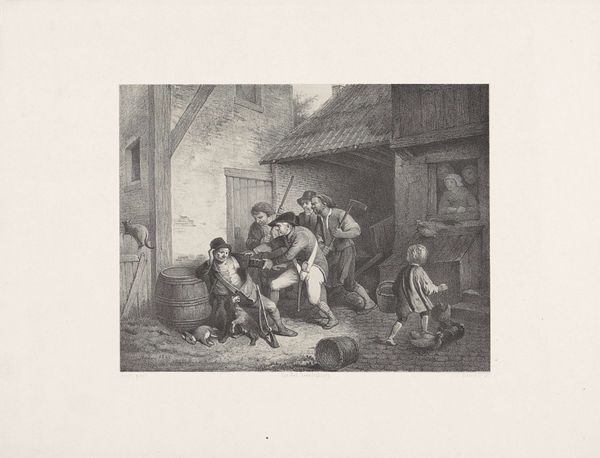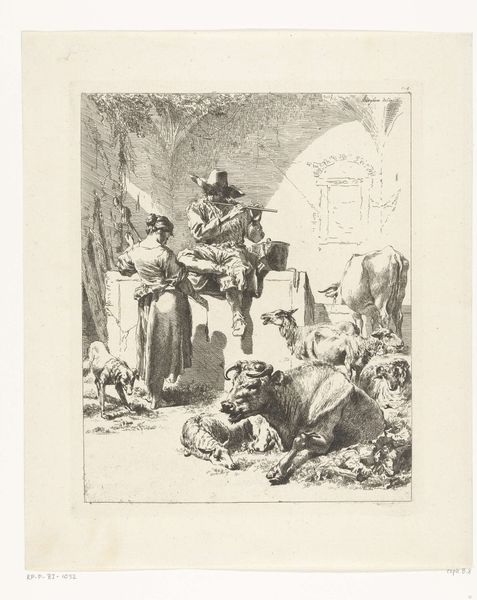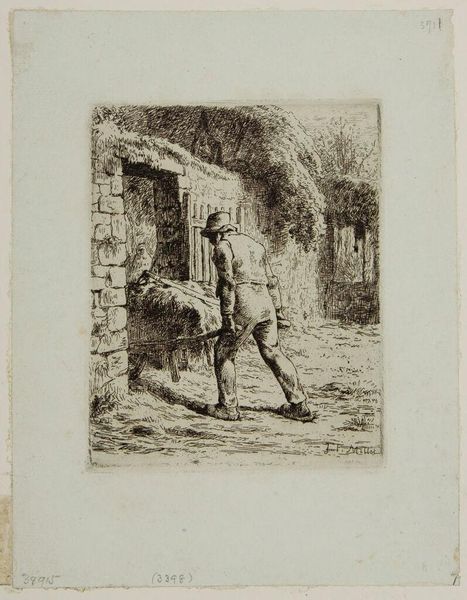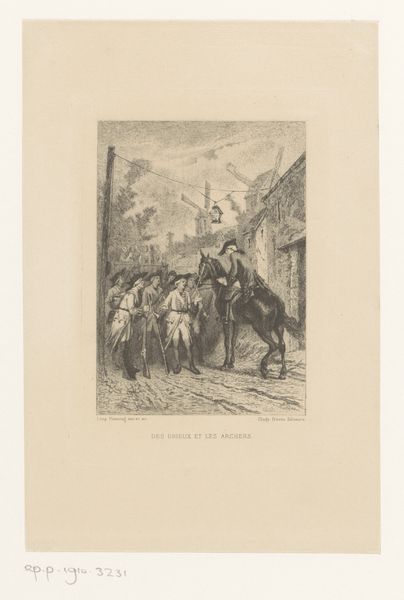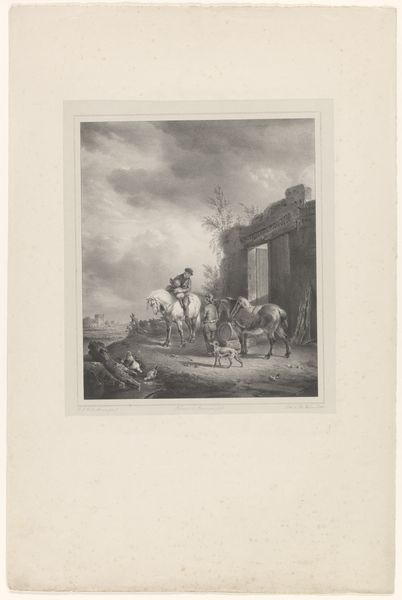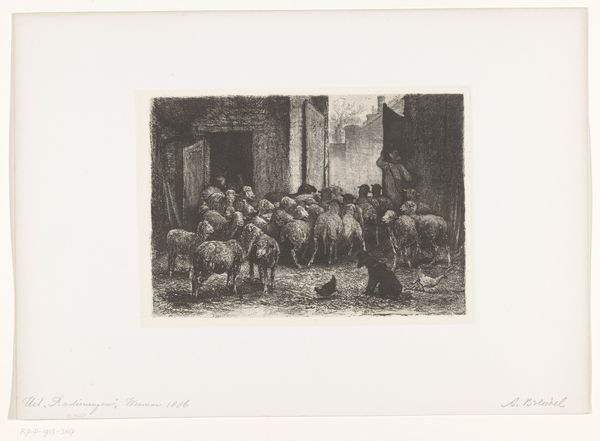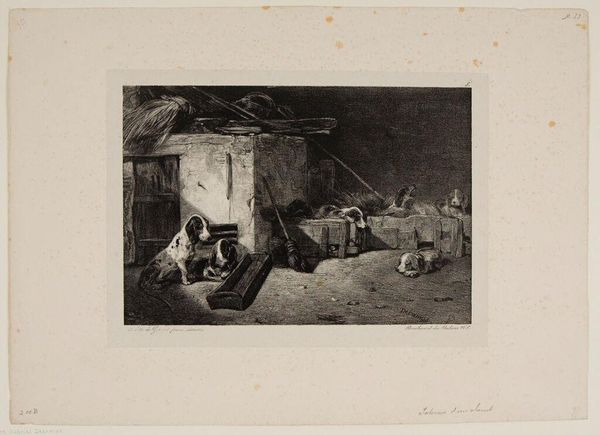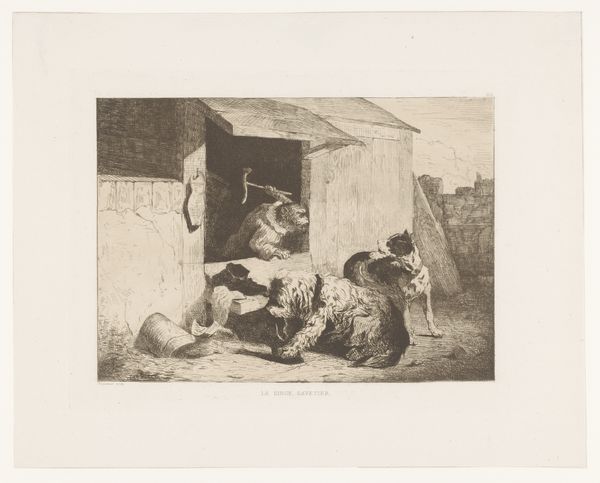
drawing, print, etching, paper
#
drawing
#
16_19th-century
#
negative space
# print
#
impressionism
#
etching
#
landscape
#
paper
#
genre-painting
#
realism
Dimensions: 196 × 163 mm (image); 229 × 181 mm (plate); 441 × 278 mm (sheet)
Copyright: Public Domain
Curator: At first glance, there is a strong balance achieved in the composition. The deep shadows offer a strong contrast, while the use of hatching techniques evokes a great atmospheric perspective. Editor: It feels very… pastoral. The sheep appear quite cramped; one imagines the smell and the sounds in that barn would be quite overpowering. Curator: Indeed. The work is entitled "Letting the Sheep Out" by Charles Jacque, and was created in 1876. It's an etching, a print made from an incised metal plate on paper, belonging to a broader context of realism in the late 19th century. Editor: As an etching, one is inherently focused on the material processes at play; it makes one think about the kind of labor it took to produce, and the kind of repetitive work someone performed making those deep scratches. This attention to detail is really astonishing, considering the humble nature of the subject. Curator: Precisely! Notice how Jacque directs our eyes: the contrast between the darkened interior of the barn, with just enough detail to create spatial recession, versus the brighter, textured fleece of the sheep crowding the foreground. This creates both a visual and thematic tension between enclosure and freedom. Editor: Right, and one can consider the socio-economic factors as well: etching prints made art accessible. Think of the paper and ink—relatively cheap materials that enable broad distribution of these images of rural life. It connects the urban collector to the agrarian realities. The tools themselves dictate the character. Curator: Yes, and it reflects an aesthetic interest in representing everyday scenes. Consider how Jacque captures the texture, almost tangibly, in the sheep's wool. These detailed contrasts evoke the sensation of wool against weathered stone—there's also the human element, that figure ushering them outward—a harmonious convergence between humanity and the animal world. Editor: Absolutely. The artist’s hand and the shepherding hand; bound together by this matrix of social labor. These observations add depth to the relatively small scale of the image. Curator: Precisely. And how delightful that such meticulous execution can elevate such a humble, quotidian scene into an object of contemplation. Editor: Well, it certainly gives one a newfound appreciation for the materials that connect the pasture to our present experience.
Comments
No comments
Be the first to comment and join the conversation on the ultimate creative platform.

